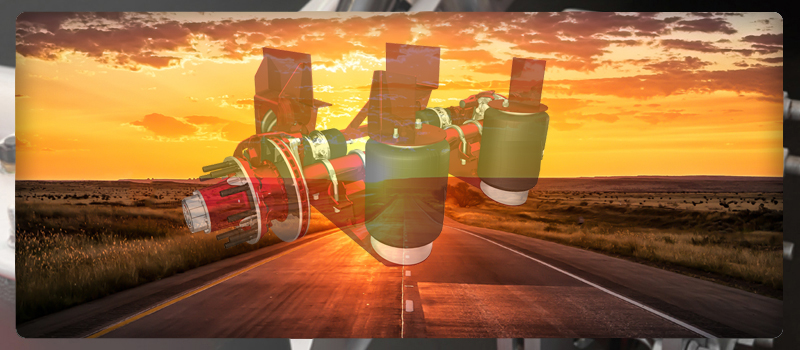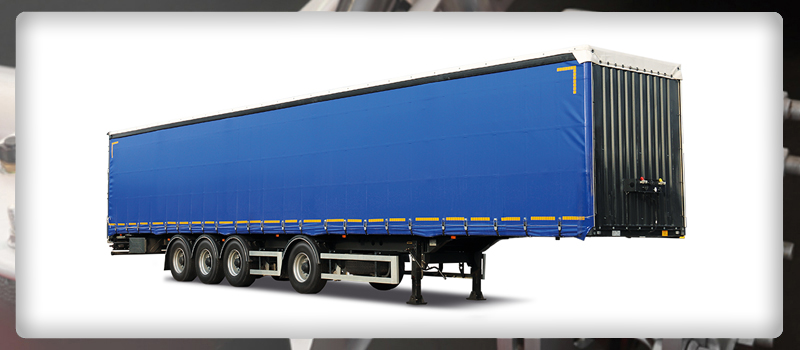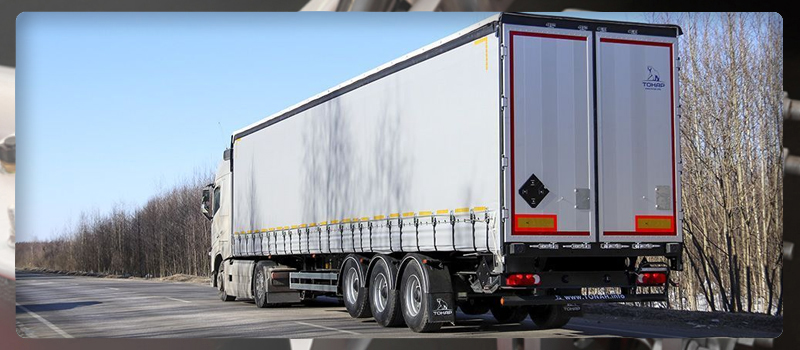Air Disc Brakes Work Better. So Why Don't More Trucks Have Them?
Shorter stopping distances could lead to an evolution in heavy-duty brakes.
The brake maintenance habits of truck fleets have been under scrutiny for years, but truck fleets and owner/operators are now faced with a larger decision regarding brake systems.
Dana Corp.’s Jim Clark is rather blunt in his assessment of disc brakes. “They’re a better animal,” he says, comparing the designs to their S-cam counterparts. Quite simply, trucks equipped with disc brakes need less room to stop.

Still, proponents of disc designs haven’t had much luck convincing North American fleets to adopt the equipment. About 98% of heavy-duty wheel ends are equipped with the more affordable S-cam components. Bendix, for example, has a mere 60,000 air disc brake calipers on North American roads, compared to the 7 million that its parent company has installed on European equipment.
But the U.S. National Highway Traffic Safety Administration (NHTSA) may be ready to offer an important boost to disc designs, openly suggesting that it will ask for a 30% reduction in allowable stopping distances for trucks when it hands down an Advanced Notice of Proposed Rule Making in late May.
Such distances would require steer axles to be equipped with either larger S-cam components or disc brakes, and a growing interest in the latter choice could lead to the need to stock a wider proliferation of heavy-duty parts.
“This new rule is going to define stopping distances, and that’s going to define the brakes that we use,” Clark said, during a recent seminar held by the Technology and Maintenance Council of the American Trucking Association.
Sixty percent of steer axles incorporate 15-inch S-cams, compared to 37% that use 16.5-inch designs, said Paul Johnson, senior director of ArvinMeritor’s North American brake business. And the different sizes translate into differences in stopping power.
Tractor-trailers with a Gross Vehicle Weight Rating (GVWR) of 52,000 lb. currently need to stop from speeds of 60 mph within a distance of 355 feet — a requirement easily met by either size of brakes. However, problems emerge if the allowable distances are shortened to 248 feet. Trucks equipped with 15 x 4 brakes on steer axles will only meet the requirement by a margin of about four feet, compared to those with 16.5 x 5 designs that will stop within 206 feet.
“Manufacturers want a 10% margin,” Clark said, suggesting that smaller designs may no longer be offered as a vehicle option once the shorter distances become a reality.
But the bigger S-cam brakes will come at a cost in the form of additional weight — a 12% increase in lining volume translates into an additional 74 lb. — and that could eliminate one of the traditional arguments against disc brakes, which tend to be 50 to 100 lb. heavier than 15 x 4 drum designs when they’re attached to steer axles.
Disc designs are seen as the brakes of the future. ArvinMeritor has promoted their use since the 1980s. Bendix has announced that it will also produce them domestically by the end of 2004, after spending about $3 million U.S. to retool a plant in Frankfort, Ky., that will be capable of building 120,000 units per year.
“We view this product as the future of braking in North America,” Bendix air disc brake caliper product line director Tom Wladyka said during the announcement. “Manufacturing air disc brake calipers here allows us to meet anticipated demand.”
While Bendix’s plans to build domestic designs were made well before NHTSA began to talk about shorter stopping distances, such an announcement could pique interest in the disc-based technology, Wladyka says.
Those who buy motor homes and fire trucks have already shown a willingness to pay a premium for the parts because of their better performance characteristics. Disc designs can maintain stopping power as brakes heat up, while drum brakes can face a problem known as brake fade, when hot drums expand beyond the reach of friction material. Meanwhile, a steer axle equipped with disc brakes will shed almost 10 feet from the minimum stopping distances enjoyed by those equipped with 16.5 x 5 S-cam designs, says Clark.
Buyers wary of problems with earlier designs may also be encouraged to look at the latest generation of products. Ventilated rotors are more robust and will run cooler than their predecessors, says Bendix principal engineer Rob Plantan. “And the pads are much better, too.”
Manufacturers, meanwhile, should be comforted by the fact that the anticipated stopping distances can be met with technology that’s already available on the market. In comparison, the introduction of in-cab warning lights for trailer ABS systems forced them to design multiplexing systems that could carry signals along existing power lines, rather than requiring an all-new connection between tractors and trailers. And the U.S. had to abandon plans to mandate anti-lock brakes in the 1970s, when unproven technology wasn’t able to meet the requirements.
Jobbers would simply face pressure to stock a growing proliferation of the related parts, suggests Dale Holman of Truck Watch Services, a Georgetown, Ont. company that specializes in truck brakes.
Disc designs may incorporate fewer components than their S-cam counterparts, but they’re still evolving, Holman says. Early models have already been updated several times, and he expects further revisions once the trucking industry embraces them, and introduces the equipment to a wider range of operating environments.
“[Sourcing] the common stuff usually isn’t a problem, but there are already some exotic parts out there,” he says. “They were putting in one design and then changing it up. Some stuff was only on the market for a year.”
A shift to disc designs could also require changes to components other than brakes. The mounting of air chambers that feed disc brakes can interfere with steering arms and tie rod ends on some North American suspension designs, Clark notes.
Some fleet managers also remain wary about brake-related maintenance needs that they’ve never had to face. Disc brake pads may simply drop into place when they need to be changed, for example, but most disc designs require hubs to be removed before rotors can be replaced. Multi-piece rotor assemblies, which can be pulled out without removing hubs, can be costly.
Regardless, the larger S-cam designs or disc brake packages appear to be the most obvious options to meet the shorter stopping distances. Different slack adjuster lengths can increase stopping force, but they would lead to adjustment problems and a number of performance issues, Johnson says. Larger brake chambers would require more space on wheel ends, and wider shoes that can extend brake life don’t add to available torque.
Manufacturers will still have an opportunity to test an array of new designs or approaches before the proposed rules become law. The NHTSA announcement will be just the beginning of a process to solicit industry comments, even though it’s a key step in developing the U.S. regulations that are usually mirrored in Canada. “There are going to be a lot of questions,” admits administration spokesman Jim Britell, calling on the industry to explain why it likes or hates any aspect of the proposed rules.
Mac Bradley, a Volvo Trucks engineer, suggests that it’s also going to be important to investigate maintenance and inspection programs — and NHTSA has indicated that it also plans to do just that. Some 18% of brakes were ruled out of service during the Commercial Vehicle Safety Alliance’s Operation Air Brake inspection blitz in 2003; 13% were out of service because of adjustment problems.
“Can better maintenance and inspection programs be equally and more important?” Bradley asks. Perhaps more important: “Are we focusing on the right issues?”
Leave words, your message replied in 24hours.
Toget Brake
Brand Vision:"to become the China leading supplier of active vehicle safety systems within the commercial vehicle industry."
At Toget, focus on air disc brake calipers technics, exceeding industry standards is a strict requirement.

Brand names, original numbers, vehicle mark and models are only for reference purposes.






